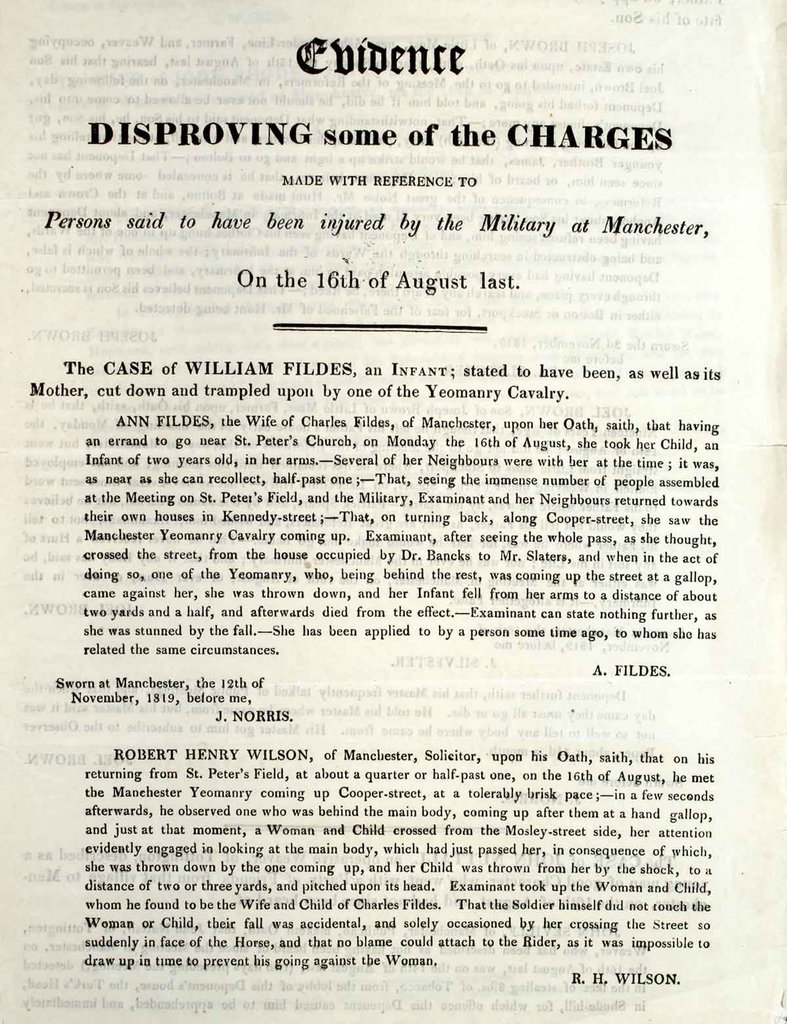The Peterloo Massacre
On 16 August 1819, around 60,000 peaceful demonstrators gathered in St Peter’s Field, Manchester to hear pro-democracy speakers discuss the need for parliamentary reform. They were charged by armed cavalry. The ‘Peterloo Massacre’ quickly became infamous. Our records show both sides of the story.
‘The British Constitution’, anti-government cartoon
Date: February 1819
Catalogue reference: View the record HO 42/184 in the catalogue
This cartoon depicts John Bull, the personification of England. However, Bull is a skeleton, as opposed to his traditional rotund and happy appearance. He has been pierced by arrows, such as ‘National Debt and taxes … Lost liberties’, and ‘Despotism’.
The cartoon makes clear that the government are to blame for Bull’s condition. At this time, radicals called for the reform of parliament and the removal of the government to deal with economic and political problems. A speech bubble from Bull’s mouth promises, ‘Resurgam’, I shall rise again.
This cartoon was sent to the Home Office from Ralph Fletcher, a Lancashire magistrate. In 1819 the county was a hotbed of radical politics.
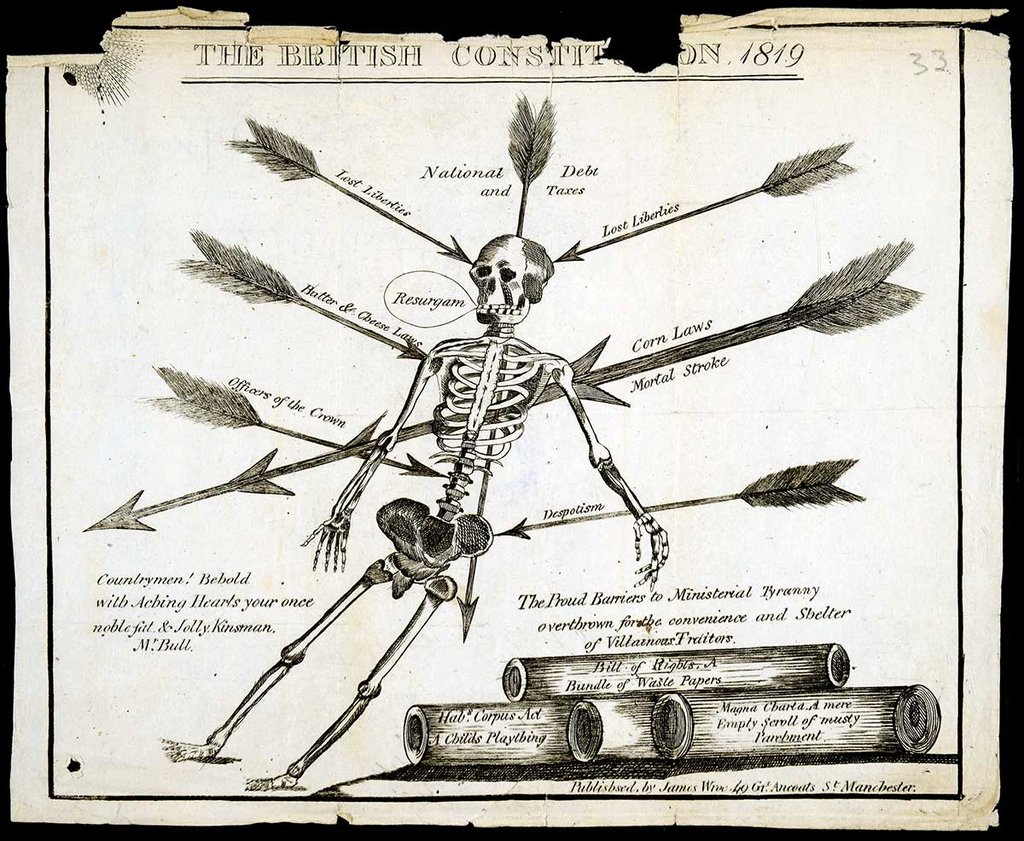
The Manchester Female Reformers’ address
Date: 31 July 1819
Catalogue reference: View the record HO 42/190 in the catalogue
In 1819, Manchester was the second most populous city in Britain, with around 130,000 inhabitants. Many had migrated there to work in the mills that fired the Industrial Revolution. Yet it elected no MPs to Parliament. The whole county of Lancashire only elected two, and few inhabitants could vote.
Against this background, Manchester developed a vibrant and sometimes febrile political culture. Middle class merchants and firebrand workers cooperated to campaign for parliamentary reform. This included some of the earliest recorded independent female political activity in Britain.
Here, the Manchester Female Reformers encourage their ‘Sisters’ to join them in campaigning for universal male suffrage, claiming that ‘the bitter cup of oppression is now full to the brim’.
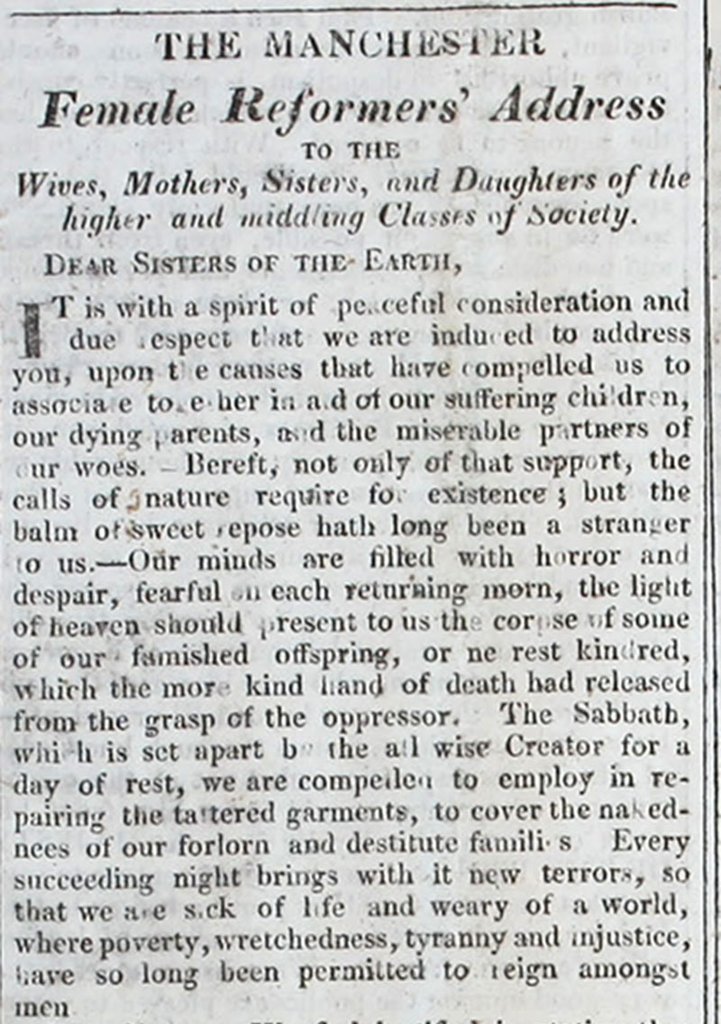
An annotated plan of St. Peter’s Field, Manchester
Date: November 1819
Catalogue reference: View the record TS 11/1056 in the catalogue
In summer 1819, reformers decided to hold a mass meeting in Manchester, inviting the famed radical orator Henry Hunt to speak. The meeting was delayed, as magistrates attempted to declare it illegal. It finally took place on Monday 16 August. 60,000 people arrived on St. Peter’s Field in orderly fashion.
The Manchester and Salford Yeomanry and 15th Hussars were called in to arrest Hunt and others. They charged into the crown on horseback and with sabres drawn, and according to one officer there, ‘rode at them, & leathered them properly’.
It is estimated that 18 people were killed, including a child, and up to 700 were injured.
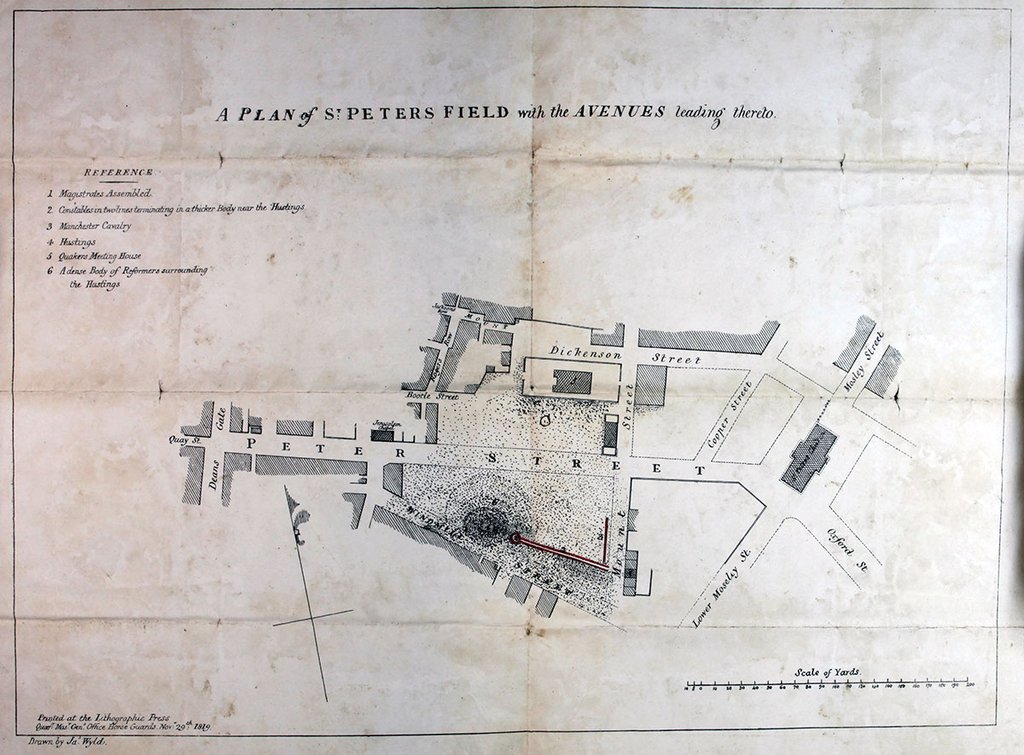
Letter from the Home Office to a Lancashire magistrate
Date: 2 March 1819
Catalogue reference: View the record HO 79/3 in the catalogue
The state, both the magistrates in Lancashire, and the Home Office who oversaw them in London, were extremely concerned by Manchester’s radicalism. Some parliamentary reformers spoke of revolution, and the state feared they would carry one out.
Here, Henry Hobhouse, the Home Office’s chief civil servant, thanks a magistrate for forwarding information about the radicals, saying that he and Lord Sidmouth, the Home Secretary, are convinced that Lancashire, ‘will not be tranquillized, until Blood shall have been shed either by the Law or the sword’.
In a matter of months, he would be proved right, but it would be the state that struck the first blow.
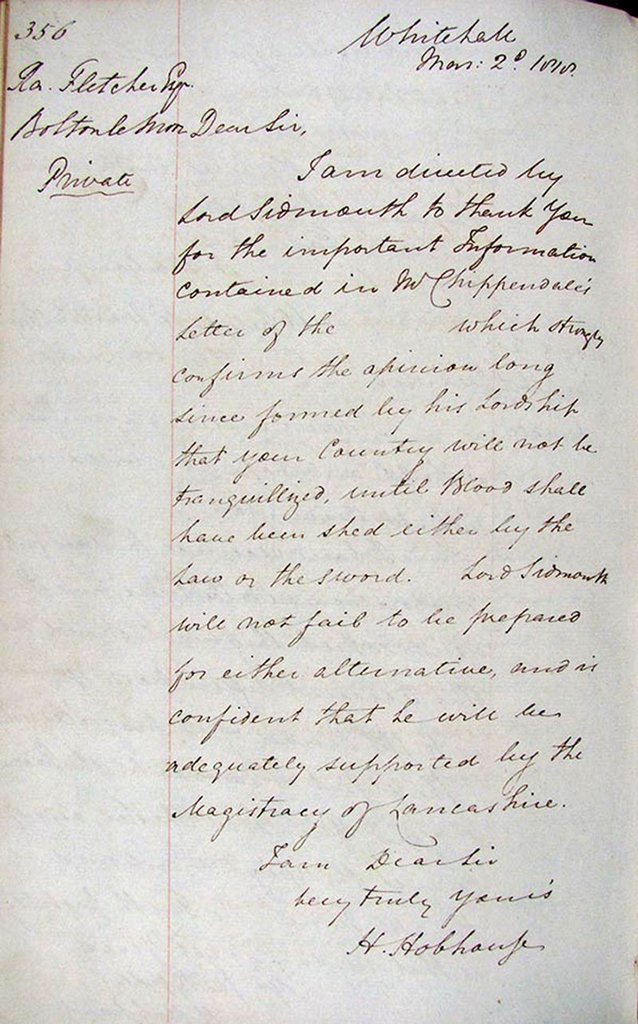
Engraving showing ‘the slaughter at Manchester’
Date: August–November 1819
Catalogue reference: View the record MPI 1/134 in the catalogue
What happened on St Peter’s Field was instantly infamous and a public relations disaster for the state. Widespread meetings were called in support of the victims, even the conservative Times criticised the government. Reformers called it ‘Peterloo’, comparing it to the slaughter at the battle of Waterloo.
This engraving, cheap and hand coloured, showing troops cutting at fallen and screaming victims, shows the form radical representations of Peterloo took.
This engraving was seized from John Jenkins, who was exhibiting it in Devon using a magnifying ‘show box’ to make the image life-size and explaining the ‘slaughter at Manchester’. Jenkins was arrested and his print sent to the Home Office.

Pro-government pamphlet about the Peterloo Massacre
Date: 1819
Catalogue reference: View the record HO 42/199 in the catalogue
Despite the outrage that surrounded Peterloo, the government, magistrates and cavalry remained defiantly unapologetic. They were supported by many of the public, who blamed reformers.
This pamphlet attempts to place the blame for the death of a child, William Fildes, at Peterloo on his mother, for dropping him when she was hit by a cavalryman’s horse.
Peterloo did not bring universal male suffrage any closer. The Home Secretary had Hunt and other arrested on suspicion of treason (they were eventually imprisoned on lesser charges), and quickly passed the ‘Six Acts’ to restrict public meetings, publishing, newspapers, and other activities. The radical Manchester Observer was forced to close in 1821.
